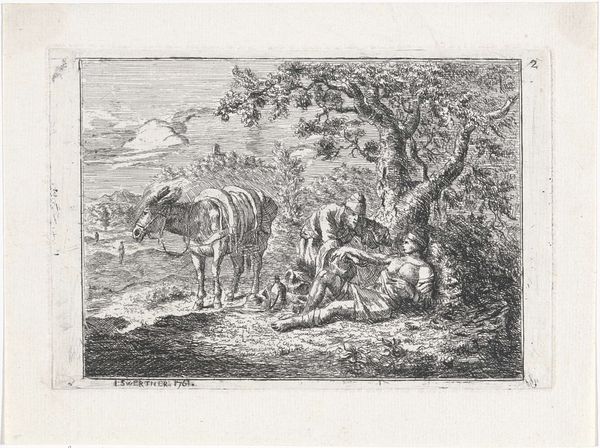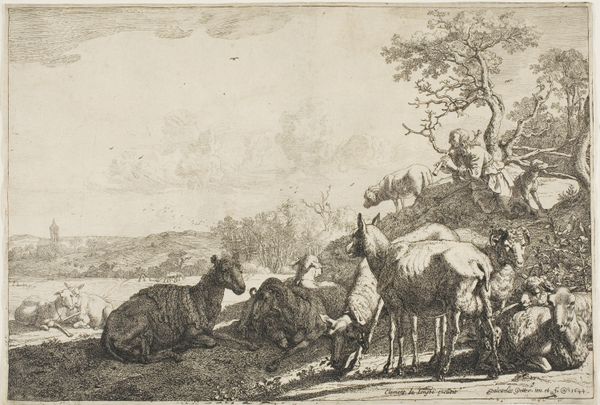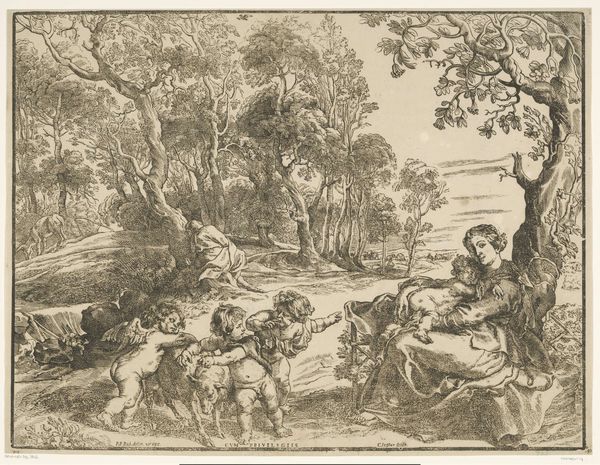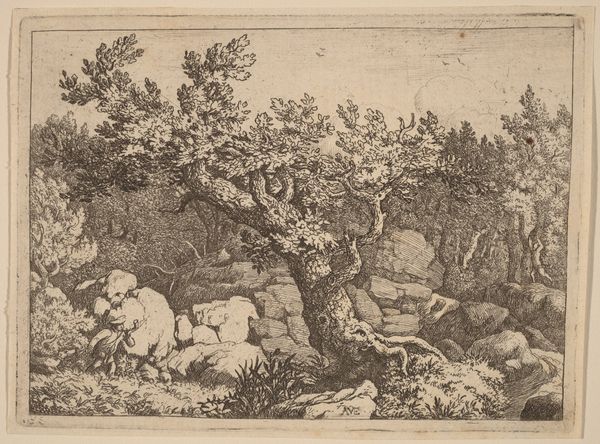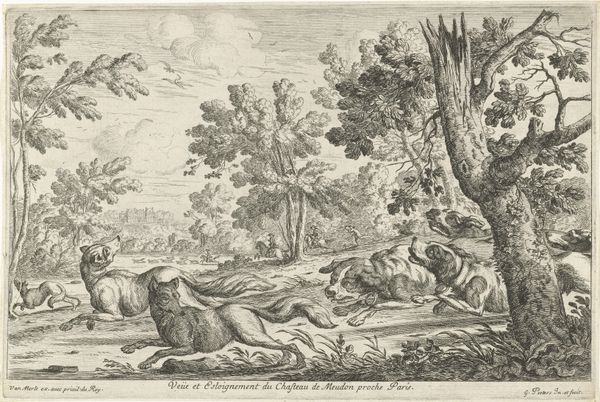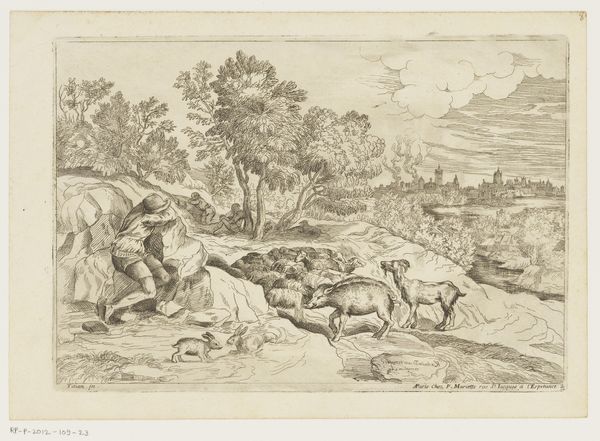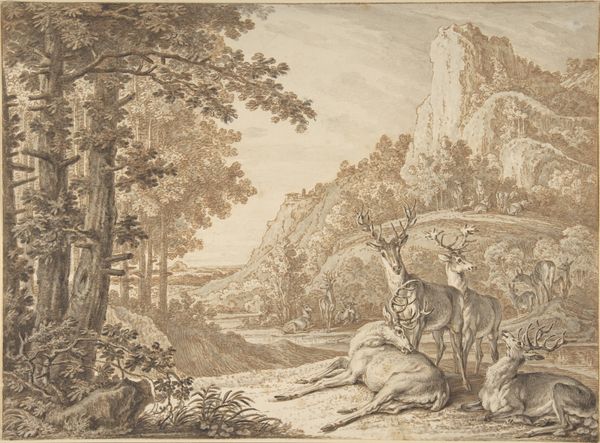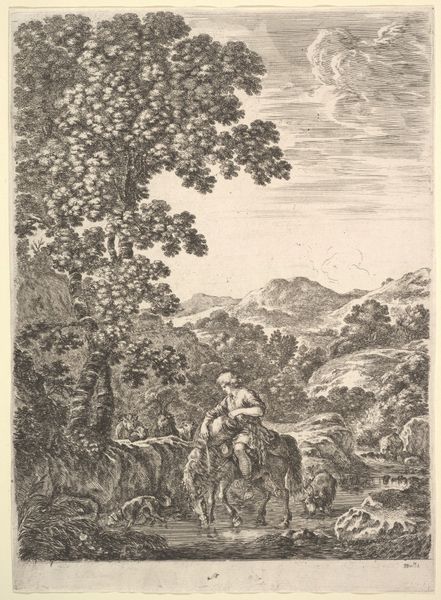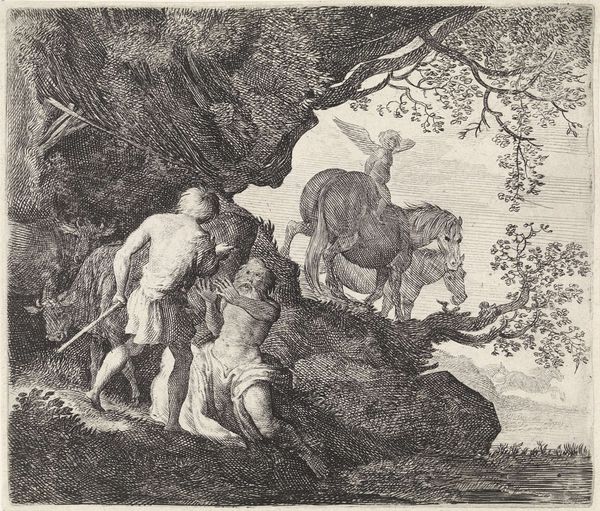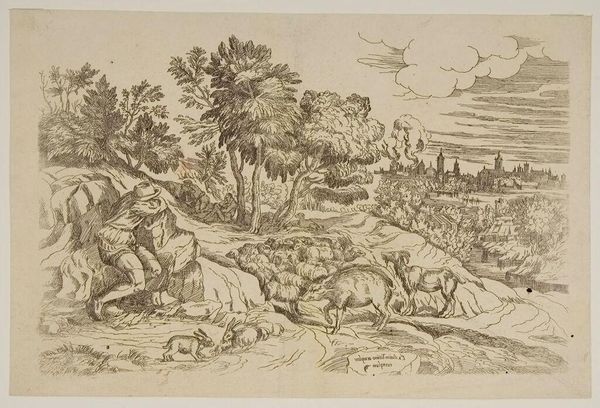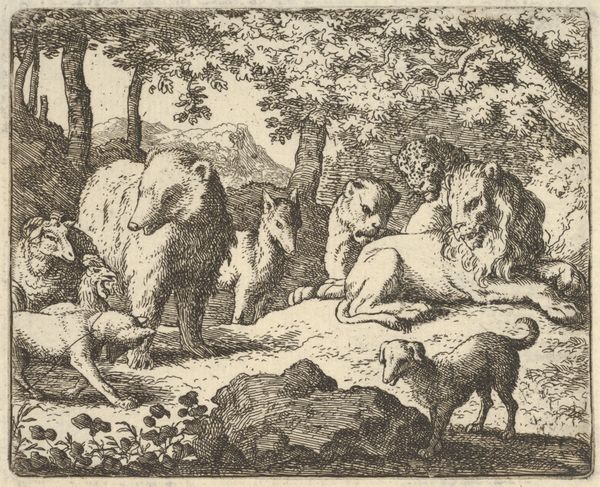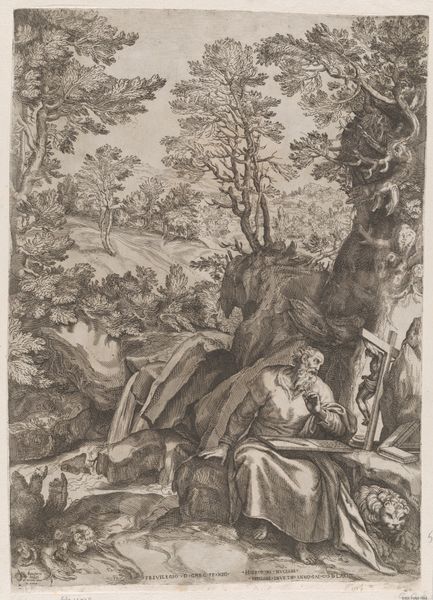
Saturn in the guise of a horse being suckled by the nymph Philyra 1508 - 1581
0:00
0:00
drawing, print, engraving
#
drawing
#
allegory
# print
#
landscape
#
figuration
#
horse
#
italian-renaissance
#
nude
#
engraving
Dimensions: sheet: 12 5/8 x 16 15/16 in. (32.1 x 43 cm)
Copyright: Public Domain
Curator: Giulio Bonasone, working sometime between 1531 and 1574, gave us this arresting image entitled "Saturn in the guise of a horse being suckled by the nymph Philyra." Editor: It's…unsettling. The scene feels both intimate and absurd. What is this about? Curator: It illustrates the myth of Philyra and Saturn. Saturn, to hide his infidelity from his wife Ops, transformed himself into a horse. From this union with Philyra came Chiron, the wise centaur. Editor: Ah, hence the hybridity. I’m curious about Bonasone's choice of engraving. It creates such fine, controlled lines. Was this common for mythological subjects at the time? Curator: Absolutely. Engraving allowed for precise detailing, mirroring the humanist interest in classical mythology during the Italian Renaissance. The horse form itself can symbolize unchecked passions, transformation, bestial desires taking hold, all of that coexisting with ideals of classical beauty evident in Philyra. Editor: And yet, despite the supposed passions, everything feels so static. The composition is incredibly staged and the landscape appears equally artificial, almost theatrical. Were engravings widely circulated? This piece almost feels…mass-produced. Curator: Engravings were indeed reproductive technologies, and dissemination was very much a part of their purpose. It's not just about artistic vision but craft, labor, and the social life of images. The making and circulation of such engravings also contributed to the diffusion of classical themes and artistic styles across Europe. Think of it as an early form of visual information sharing. Editor: That makes a lot of sense when considering cultural transmission. But going back to Saturn – it’s odd. A horse representing the father of the gods feels like a significant demotion. It speaks volumes about power, disguise, and the lengths to which some will go to satisfy… urges. Curator: A key reason why symbols work, their emotional tenor remains even as interpretations change. That underlying sense of unease speaks to a shared human psychology still powerful today. Editor: So in the end, beyond the historical techniques and material conditions, this engraving captures both a story of classical myth but speaks to darker aspects of the human condition. Curator: Precisely, a lasting reflection on how we frame authority and power in image form, and to whose end.
Comments
No comments
Be the first to comment and join the conversation on the ultimate creative platform.
